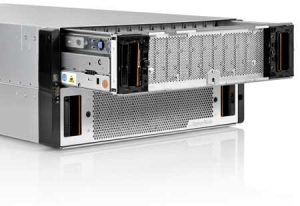IBC: Rohde & Schwarz Sees Fast Ethernet Replacing FC in Media Storage
Introducing extensions and enhancements to R&S SpycerNode media storage system, 2U unit model, several JBOD capacity extension units, and R&S SpycerPAM production asset management system
This is a Press Release edited by StorageNewsletter.com on September 5, 2019 at 2:26 pmWhile some manufacturers still promote FC as an enabling networking technology in media storage its days appear to be strictly numbered – does this present risks for media companies?
![]() Oliver Gapp, sales director, broadcast and media for Europe, Rohde & Schwarz GmbH & Co KG, believes that the answer is yes.
Oliver Gapp, sales director, broadcast and media for Europe, Rohde & Schwarz GmbH & Co KG, believes that the answer is yes.
“Today, if you look at FC relative to high-speed Ethernet, there is no comparison. The future is Ethernet and yet some media storage manufacturers continue to promote FC, which presents real risks for their customers,” Oliver Gappa, explained.
Gappa’s remarks are backed up by industry data. On the one hand, the FC Industry Association (FCIA) reports that the FC market saw a return to modest growth in 2018. In comparison, the Open DeviceNet Vendor Association (ODVA) reports strong growth in Ethernet switch connectivity. In 2018, port shipments for 100GbE switches rose 154.6% year over year to 3.5 million, while 25GbE ports saw higher growth rates with port shipments up 251.0% to 2.6 million and 40GbE port shipments growing 12.6% year over year to 1.3 million.
SpycerNode

Gappa was commenting after Rohde & Schwarz announced that at IBC 2019 it will be introducing a series of extensions and enhancements to its R&S SpycerNode media storage system. Launched at IBC last year, it is the company’s first media storage system to be entirely built around high-speed Ethernet connectivity.
“The FC standard was completed in 1994 and it has served the media industry well, but in essence there are only around nine manufacturers developing FC technology. Compare this to high-speed Ethernet, where there are over 500 companies, such as Juniper, Arista and Cisco introducing new products every year and the future is clear,” comments Gappa.
The question is whether end users of storage systems are aware of this market trend and the consequences for their business. Broadcasters, production companies and post-houses do not want to run two networks within their facilities because of the infrastructure costs and support requirements.
“Recent developments in high-speed Ethernet technology make it comparable to FC in performance but it is much more flexible and enables the creation and operation of NAS systems more easy and cost-effectively,” Gappa continued. “As we are demonstrating with SpycerNode, Ethernet represents a far more versatile, productive and cost-efficient platform for media storage. This is the message that we need to communicate to the international media community.“
At IBC 2019, Rohde & Schwarz will extend its R&S SpycerNode media storage system with the introduction of a 2U height unit model. This capacity system represents a competitively priced entry point into this storage system that harnesses the latest advances in ‘High Power Computing’ based on high speed Ethernet connectivity. Also, the company will introduce several JBOD capacity extension units, which provide affordable storage capacity expansion for their other SpycerNode models.
Another initiative sees the launch of R&S SpycerPAM – a production asset management system, which allows workgroup editing and integration of various editing and mastering platforms including Adobe Premier, Avid Media Composer and Apple Final Cut Pro.
Read also:
Rohde & Schwarz: SpycerNode 2U/5U RAID Media Storage Systems
Available with NL-SAS HDD and SAS SSDs in different capacities
December 14, 2018 | Press Release













 Subscribe to our free daily newsletter
Subscribe to our free daily newsletter

